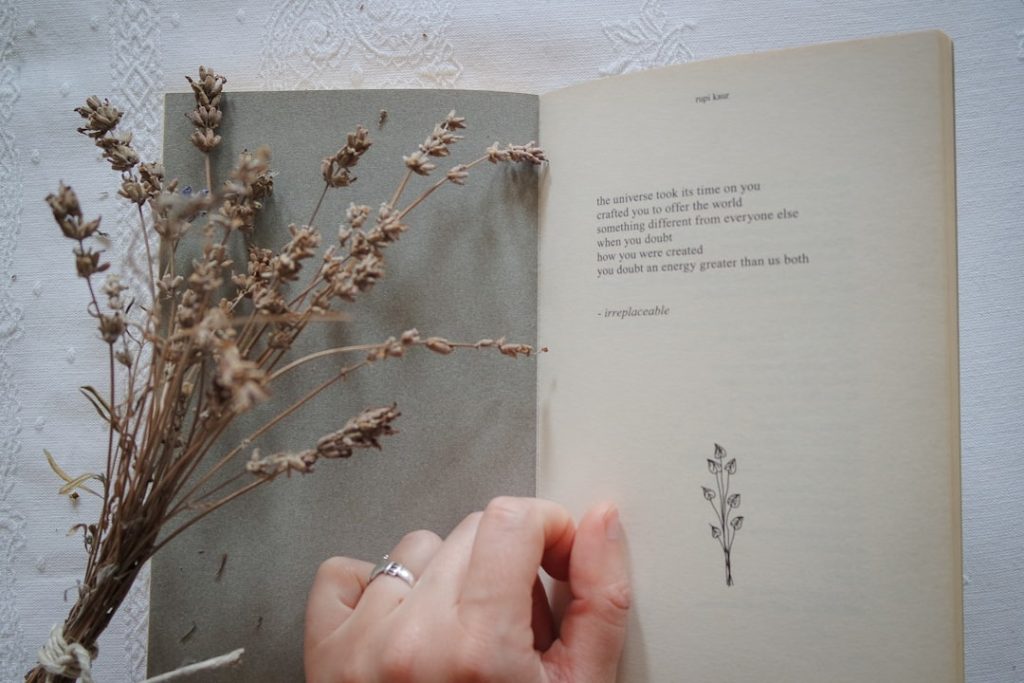PoetryFoundation is a vital resource for anyone interested in the art of poetry, serving as a comprehensive hub for poets, readers, and educators alike. Established in 2003, the foundation is dedicated to promoting poetry in all its forms and fostering a deeper appreciation for this unique literary genre. With a vast online library that includes thousands of poems, essays, and articles, PoetryFoundation offers an extensive collection that caters to diverse tastes and interests.
The organization also publishes “Poetry” magazine, one of the most prestigious literary journals in the world, which has been in circulation since 1912. This commitment to the craft of poetry not only highlights the foundation’s dedication to the art form but also underscores its role in shaping contemporary poetic discourse. In addition to its rich repository of written works, PoetryFoundation actively engages with the community through various programs and initiatives.
These include educational resources for teachers and students, public events featuring readings and discussions, and outreach programs designed to bring poetry to underserved communities. By fostering a love for poetry among people of all ages and backgrounds, the foundation plays a crucial role in ensuring that this timeless art form continues to thrive. Whether you are a seasoned poet or a curious newcomer, PoetryFoundation provides a welcoming space where you can explore the beauty and complexity of poetry while connecting with others who share your passion.
Key Takeaways
- PoetryFoundation is a valuable resource for anyone interested in poetry, offering a wide range of content and tools for exploration and learning.
- Understanding the elements of poetry, such as rhyme, meter, and imagery, is essential for appreciating and analyzing poems effectively.
- Exploring different forms of poetry, from sonnets to haikus, can provide insight into the diverse ways poets express themselves.
- Analyzing poetic devices and techniques, such as metaphor and symbolism, can deepen one’s understanding of a poem’s meaning and impact.
- Engaging with the work of famous poets, through reading their poems and learning about their lives, can inspire and inform one’s own creative writing.
Understanding the Elements of Poetry
To fully appreciate poetry, it is essential to understand its fundamental elements. At its core, poetry is an expression of human experience, often distilled into a concentrated form that evokes emotions and provokes thought. One of the primary elements of poetry is imagery, which refers to the use of vivid and descriptive language that appeals to the senses.
Through imagery, poets can create mental pictures that transport readers into different worlds or evoke specific feelings. For instance, a poet might describe a sunset using rich colors and sensory details, allowing readers to visualize the scene and feel its emotional weight. This element is crucial because it helps bridge the gap between the poet’s intent and the reader’s interpretation.
Another key element of poetry is sound, which encompasses various techniques such as rhyme, rhythm, alliteration, and assonance. The musicality of poetry can enhance its emotional impact and create a memorable reading experience. Rhyme schemes can establish patterns that resonate with readers, while rhythm can dictate the pace at which a poem unfolds.
For example, a poem with a steady rhythm may evoke feelings of calmness or stability, while one with abrupt shifts in rhythm might convey tension or chaos. By manipulating sound and rhythm, poets can craft their work in ways that deepen its meaning and engage readers on multiple levels. Understanding these elements allows readers to appreciate the intricacies of poetic language and the artistry behind each carefully chosen word.
Exploring Different Forms of Poetry

Poetry is an incredibly diverse genre that encompasses a wide range of forms and styles, each with its own unique characteristics and conventions. Traditional forms such as sonnets, haikus, and villanelles have specific structures that dictate their length, rhyme scheme, and meter. For instance, a sonnet typically consists of 14 lines written in iambic pentameter, often exploring themes of love or nature.
In contrast, haikus are brief three-line poems rooted in Japanese tradition that capture fleeting moments in nature or human experience. By adhering to these established forms, poets can challenge themselves creatively while also engaging with centuries of poetic tradition. Contemporary poetry has expanded beyond these traditional boundaries, giving rise to free verse and experimental forms that prioritize personal expression over strict adherence to structure.
Free verse allows poets to write without constraints, enabling them to explore their thoughts and emotions in a more fluid manner. This form often emphasizes line breaks, enjambment, and varied stanza lengths to create a unique rhythm that reflects the poet’s voice. Additionally, spoken word poetry has gained popularity as an oral art form that combines performance with poetic expression.
This dynamic style often addresses social issues and personal narratives, inviting audiences to connect with the poet’s message on a visceral level. By exploring these various forms of poetry, readers can gain insight into the myriad ways poets convey their thoughts and emotions.
Analyzing Poetic Devices and Techniques
| Poetic Device | Definition | Example |
|---|---|---|
| Metaphor | Implied comparison between two unlike things | “Her eyes were stars shining brightly” |
| Simile | Comparison using “like” or “as” | “Her smile was like sunshine” |
| Alliteration | Repetition of initial consonant sounds | “Peter Piper picked a peck of pickled peppers” |
| Assonance | Repetition of vowel sounds | “The rain in Spain falls mainly on the plain” |
| Onomatopoeia | Words that imitate natural sounds | “The bees buzzed around the flowers” |
Poets employ a variety of devices and techniques to enhance their work and convey complex ideas in nuanced ways. One such device is metaphor, which allows poets to draw comparisons between seemingly unrelated concepts to illuminate deeper meanings. For example, when a poet describes love as a “rose with thorns,” they evoke both the beauty and pain associated with romantic relationships.
This figurative language invites readers to engage with the poem on multiple levels, encouraging them to reflect on their own experiences and interpretations. Similarly, similes—comparisons using “like” or “as”—serve as another powerful tool for creating vivid imagery and emotional resonance. Another important technique is symbolism, where objects or actions represent larger ideas or themes within a poem.
A poet might use a storm as a symbol for turmoil or conflict in one’s life, allowing readers to draw connections between the natural world and human emotions. Additionally, repetition can be employed to emphasize key themes or ideas within a poem, creating a rhythmic quality that reinforces its message. By analyzing these devices and techniques, readers can uncover layers of meaning within a poem that may not be immediately apparent.
This deeper understanding enriches the reading experience and fosters a greater appreciation for the craft of poetry.
Diving into the Work of Famous Poets
The world of poetry is rich with influential figures whose works have shaped literary history and continue to inspire new generations of writers and readers alike. Poets such as Emily Dickinson, Robert Frost, Langston Hughes, and Maya Angelou have left indelible marks on the landscape of American literature through their unique voices and perspectives. Emily Dickinson’s introspective style often delves into themes of death, immortality, and nature, employing unconventional punctuation and slant rhyme to create an enigmatic quality in her work.
In contrast, Robert Frost’s poems frequently explore rural life and human relationships through accessible language and vivid imagery, making profound observations about existence. Langston Hughes emerged as a leading figure during the Harlem Renaissance, using his poetry to articulate the struggles and aspirations of African Americans in the early 20th century. His work often incorporates jazz rhythms and vernacular speech, reflecting the cultural richness of his community while addressing social injustices.
Similarly, Maya Angelou’s powerful verses celebrate resilience and strength in the face of adversity, drawing from her own experiences as an African American woman in America. By diving into the works of these renowned poets, readers can gain insight into different cultural contexts and historical moments that have influenced their writing. Engaging with their poetry not only enriches one’s understanding of literary traditions but also highlights the enduring power of words to evoke emotion and inspire change.
Engaging with Poetry through Audio and Video

In recent years, technology has transformed how we engage with poetry by providing new platforms for experiencing this art form through audio and video formats. Podcasts dedicated to poetry have gained popularity as they allow listeners to immerse themselves in discussions about poetic works while hearing readings from both established poets and emerging voices. These audio experiences can deepen one’s understanding of poetry by offering insights into the creative process behind each piece while also showcasing diverse interpretations from different readers.
Additionally, many poets now share their work through social media platforms like Instagram or TikTok, where short videos can capture their performances or provide visual interpretations of their poems. Moreover, video recordings of live readings or performances have become increasingly accessible online through platforms like YouTube or Vimeo. These recordings allow audiences worldwide to witness poets delivering their work with passion and emotion—elements that can sometimes be lost on the page alone.
The combination of visual elements with spoken word adds another layer of engagement for viewers who may find themselves more connected to the material when experiencing it in this dynamic format. By embracing these modern avenues for engaging with poetry, individuals can discover new voices while also appreciating classic works in fresh ways.
Using PoetryFoundation as a Resource for Creative Writing
PoetryFoundation serves as an invaluable resource for aspiring poets looking to hone their craft and develop their unique voices. The foundation offers numerous tools designed specifically for writers at all stages of their creative journeys. For instance, its extensive collection of poems provides inspiration by showcasing various styles, themes, and forms that poets have employed throughout history.
By reading widely across different genres—ranging from traditional sonnets to contemporary free verse—writers can gain insights into what resonates with them personally while also learning about diverse poetic techniques. In addition to its vast library of poems, PoetryFoundation features articles on writing tips and prompts that encourage creativity among budding poets. These resources often explore topics such as finding one’s voice, experimenting with form, or overcoming writer’s block—challenges many writers face at some point in their journeys.
Furthermore, workshops hosted by experienced poets provide opportunities for hands-on learning through feedback sessions where participants can share their work in supportive environments. By utilizing these resources offered by PoetryFoundation, aspiring poets can cultivate their skills while connecting with others who share their passion for writing.
Connecting with a Community of Poetry Lovers
One of the most enriching aspects of engaging with poetry is the sense of community it fosters among enthusiasts from all walks of life. PoetryFoundation not only serves as an educational resource but also acts as a platform for connecting individuals who share a love for this art form. Through events such as readings, workshops, and discussions hosted by the foundation or affiliated organizations, poetry lovers can come together to celebrate their shared passion while exchanging ideas about their favorite works or poets.
These gatherings create opportunities for networking within the literary community while also providing spaces where individuals feel comfortable expressing themselves creatively. Moreover, online forums and social media groups dedicated to poetry allow individuals to connect beyond geographical boundaries—sharing their own work while discovering new voices from around the world. Engaging with others who appreciate poetry fosters collaboration among writers while also encouraging constructive feedback that can help refine one’s craft over time.
Whether through local events or virtual platforms like PoetryFoundation’s website or social media channels—these connections enrich not only individual experiences but also contribute significantly toward cultivating an inclusive culture around poetry appreciation globally. Ultimately, being part of this vibrant community enhances one’s understanding of poetic expression while inspiring continued exploration within this timeless art form.
If you’re interested in exploring more about the terms and conditions that govern the use of content, including poetry, you might find it useful to read the terms of use provided by various websites. For instance, you can review the terms of use at this link, which could provide insights into the legal frameworks and user responsibilities when interacting with creative content online. This can be particularly relevant if you’re looking to understand how poems and other literary works are protected or shared on digital platforms.
FAQs
What is Poetry Foundation?
Poetry Foundation is a literary organization that aims to promote poetry and support poets. It is also the publisher of Poetry magazine, one of the oldest and most prestigious poetry publications in the world.
What does Poetry Foundation do?
Poetry Foundation provides a wide range of resources and programs to support poets and poetry. This includes publishing poetry, organizing events and readings, offering educational resources, and maintaining a comprehensive online archive of poems and related content.
How can I access Poetry Foundation’s resources?
Poetry Foundation’s resources, including poems, articles, and educational materials, are available for free on its website. Additionally, Poetry magazine is available for subscription in print and digital formats.
Does Poetry Foundation offer any educational programs?
Yes, Poetry Foundation offers a variety of educational programs for students, teachers, and the general public. These programs include poetry workshops, lesson plans, and online learning resources.
Is Poetry Foundation involved in any poetry events or initiatives?
Yes, Poetry Foundation organizes and supports various poetry events, readings, and initiatives throughout the year. These events often feature renowned poets and aim to celebrate and promote the art of poetry.
How can I support Poetry Foundation’s mission?
You can support Poetry Foundation by subscribing to Poetry magazine, making a donation, or participating in its programs and events. Additionally, spreading awareness about the organization and its mission can help support its efforts to promote poetry.





